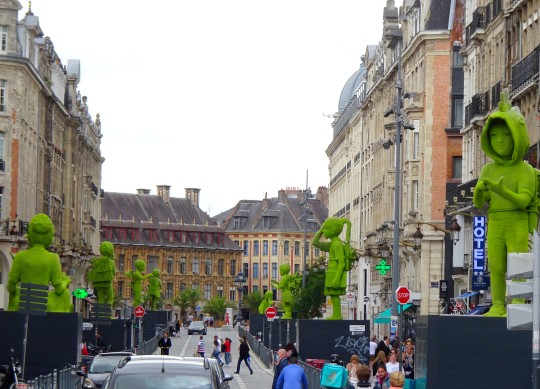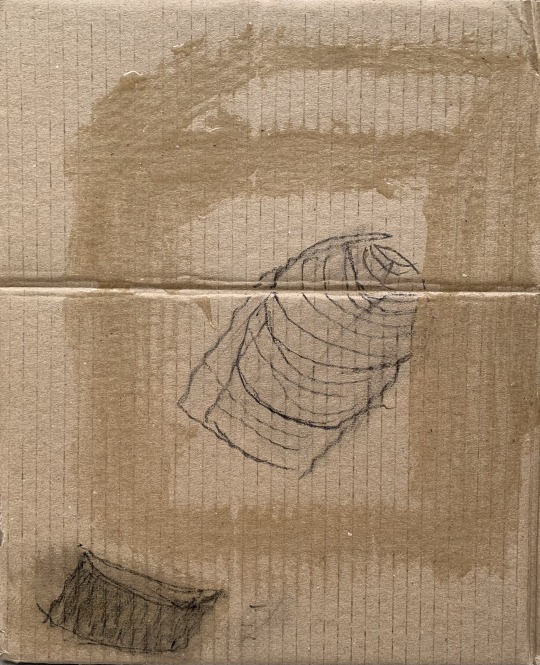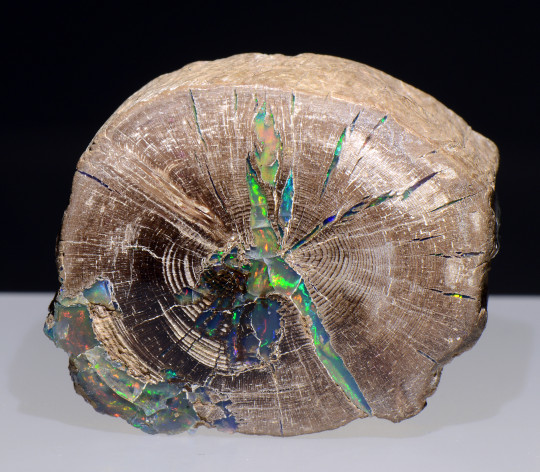#fossiles
Photo





Lille. Dans le cadre d’ “Utopia”, toute une série d’expos.
Ici, au Tri Postal, l’expo “Les Vivants” (avec pas mal d’œuvres d’indiens yanomani):
- Solange Pessoa - “Mundão II”
- les 2 suivantes: Cai Guo-Qiang - "White Tone” (oeuvre faite avec...de la poudre à canon !)
puis dans la Rue Faidherbe, les enfants verts de Kim Simonsson
#lille#expo#art contemporain#tripostal#tri postal#utopia#les vivants#brésil#solange pessoa#rouille#fossiles#cai guo-qiang#poudre à canon#rue faidherbe#vert#kim simonsson
2 notes
·
View notes
Text

BOW DOWN TO THE ANCIENT ONE
52K notes
·
View notes
Text
No paywall version here.
"Two and a half years ago, when I was asked to help write the most authoritative report on climate change in the United States, I hesitated...
In the end, I said yes, but reluctantly. Frankly, I was sick of admonishing people about how bad things could get. Scientists have raised the alarm over and over again, and still the temperature rises. Extreme events like heat waves, floods and droughts are becoming more severe and frequent, exactly as we predicted they would. We were proved right. It didn’t seem to matter.
Our report, which was released on Tuesday, contains more dire warnings. There are plenty of new reasons for despair. Thanks to recent scientific advances, we can now link climate change to specific extreme weather disasters, and we have a better understanding of how the feedback loops in the climate system can make warming even worse. We can also now more confidently forecast catastrophic outcomes if global emissions continue on their current trajectory.
But to me, the most surprising new finding in the Fifth National Climate Assessment is this: There has been genuine progress, too.
I’m used to mind-boggling numbers, and there are many of them in this report. Human beings have put about 1.6 trillion tons of carbon in the atmosphere since the Industrial Revolution — more than the weight of every living thing on Earth combined. But as we wrote the report, I learned other, even more mind-boggling numbers. In the last decade, the cost of wind energy has declined by 70 percent and solar has declined 90 percent. Renewables now make up 80 percent of new electricity generation capacity. Our country’s greenhouse gas emissions are falling, even as our G.D.P. and population grow.
In the report, we were tasked with projecting future climate change. We showed what the United States would look like if the world warms by 2 degrees Celsius. It wasn’t a pretty picture: more heat waves, more uncomfortably hot nights, more downpours, more droughts. If greenhouse emissions continue to rise, we could reach that point in the next couple of decades. If they fall a little, maybe we can stave it off until the middle of the century. But our findings also offered a glimmer of hope: If emissions fall dramatically, as the report suggested they could, we may never reach 2 degrees Celsius at all.
For the first time in my career, I felt something strange: optimism.
And that simple realization was enough to convince me that releasing yet another climate report was worthwhile.
Something has changed in the United States, and not just the climate. State, local and tribal governments all around the country have begun to take action. Some politicians now actually campaign on climate change, instead of ignoring or lying about it. Congress passed federal climate legislation — something I’d long regarded as impossible — in 2022 as we turned in the first draft.
[Note: She's talking about the Inflation Reduction Act and the Infrastructure Act, which despite the names were the two biggest climate packages passed in US history. And their passage in mid 2022 was a big turning point: that's when, for the first time in decades, a lot of scientists started looking at the numbers - esp the ones that would come from the IRA's funding - and said "Wait, holy shit, we have an actual chance."]
And while the report stresses the urgency of limiting warming to prevent terrible risks, it has a new message, too: We can do this. We now know how to make the dramatic emissions cuts we’d need to limit warming, and it’s very possible to do this in a way that’s sustainable, healthy and fair.
The conversation has moved on, and the role of scientists has changed. We’re not just warning of danger anymore. We’re showing the way to safety.
I was wrong about those previous reports: They did matter, after all. While climate scientists were warning the world of disaster, a small army of scientists, engineers, policymakers and others were getting to work. These first responders have helped move us toward our climate goals. Our warnings did their job.
To limit global warming, we need many more people to get on board... We need to reach those who haven’t yet been moved by our warnings. I’m not talking about the fossil fuel industry here; nor do I particularly care about winning over the small but noisy group of committed climate deniers. But I believe we can reach the many people whose eyes glaze over when they hear yet another dire warning or see another report like the one we just published.
The reason is that now, we have a better story to tell. The evidence is clear: Responding to climate change will not only create a better world for our children and grandchildren, but it will also make the world better for us right now.
Eliminating the sources of greenhouse gas emissions will make our air and water cleaner, our economy stronger and our quality of life better. It could save hundreds of thousands or even millions of lives across the country through air quality benefits alone. Using land more wisely can both limit climate change and protect biodiversity. Climate change most strongly affects communities that get a raw deal in our society: people with low incomes, people of color, children and the elderly. And climate action can be an opportunity to redress legacies of racism, neglect and injustice.
I could still tell you scary stories about a future ravaged by climate change, and they’d be true, at least on the trajectory we’re currently on. But it’s also true that we have a once-in-human-history chance not only to prevent the worst effects but also to make the world better right now. It would be a shame to squander this opportunity. So I don’t just want to talk about the problems anymore. I want to talk about the solutions. Consider this your last warning from me."
-via New York Times. Opinion essay by leading climate scientist Kate Marvel. November 18, 2023.
#WE CAN DO THIS#I SO TRULY BELIEVE THAT WE CAN DO THIS#WE CAN SAVE OURSELVES AND THE WORLD ALONG WITH US#climate crisis#united states#climate change#conservation#hope posting#sustainability#climate news#climate action#climate emergency#fossil fuels#global warming#environmentalism#climate hope#solarpunk#climate optimism#climate policy#earth#science#climate science#meteorology#extreme weather#renewable energy#solar power#wind power#renewables#carbon emissions#climate justice
33K notes
·
View notes
Text

Fossil of dragonfly larva or I don’t know.
25K notes
·
View notes
Text
Fossile
Charcoal and varnish on cardboard / 30 x 20 cm / Briat 2024
–
–
–
–
–
Le journal du peintre
Les tableaux du peintre
Painting news project
Twitter
–
–
–
–
—
–
–
–
–
–
Le journal du peintre
Les tableaux du peintre
Painting news project
Twitter
–
–
–
–
–
–
–
Le journal du peintre
Les tableaux du peintre
Painting news project
Twitter
–
–
–
–
—
–
–
–
–
–
Le…

View On WordPress
0 notes
Text
Actually all fossil reconstructions are wrong because flesh only evolved recently. Before that it was bone world
55K notes
·
View notes
Text

Fossilas: crinoid stems and stars including a 6 pointed pentacrites and a pyritised ammonte
24K notes
·
View notes
Text








LAST CHANCE FOR SWEATER PRE-ORDERS!
Sweaters are restocked and up for pre-order in every size till March 20th at 8pm CST!
Some designs will not be returning!
If your size was sold out before it's available now!
XS-3XL!
Shop here!
#small artist#small business#art#merch design#knit#sweater#ugly sweater#kickstarter#bee#fossils#ufo#trans artist#trans business
8K notes
·
View notes
Text

i found the perfect display for my 100,000+ year old shrimp fossil
#fishblr#shrimpblr#shrimp#shrimpy#shrimposting#fossil#fossilized shrimp#fossilized#1k#5k#10k#15k#20k#help#25k#30k#35k#40k#wtf man
49K notes
·
View notes
Text

a thief
6K notes
·
View notes
Text
Fossiles de Burgess
Au sommet des Rocheuses canadiennes, des paléontologues récoltent des fossiles d’animaux parfois extravagants, avec cinq yeux et une trompe en guise de bouche. Vieux d’un demi-milliard d’années, ils témoignent d’une période où l’évolution expérimente avec les formes et va donner naissance à la plupart des grands groupes animaux modernes.
Découverte | Les fossiles de Burgess
youtube
View On WordPress
0 notes
Text

The fossil of a 20cm baby crocodile from Germany.
#fossils#archeology#naturalhistory#paleontology#nature#photography#paleontography#animals#cute animals#crocodile#reptile
20K notes
·
View notes
Text

Petoskey Stones
fossilized coral that lived 350 million years ago - the rocks rounded in the surf along the shore of Lake Michigan near Petosky, Michigan.
10K notes
·
View notes
Photo

Opal in petrified wood, Natural History Museum of Los Angeles, Gem and Mineral Hall Collection. By Stan Celestian on Flickr. (Hi-Res)
#opal#opals#opalised#opalized#petrified#wood#opalised wood#opalized wood#petrified wood#fossil#fossils#fossilised#fossilized#fossilised wood#fossilized wood#tree#trees#tree trunk#tree trunks#mineral#minerals#museum#museums#natural history museum#nhmla#los angeles#natural history museum of los angeles#geology#stan celestian
10K notes
·
View notes
Text
Fossiles
Numeric etching / Briat 2024
–
–
–
Le journal du peintre
Les tableaux du peintre
Painting news project
Twitter
–
–
–
–
—
–
–
–
–
–
Le journal du peintre
Les tableaux du peintre
Painting news project
Twitter
–
–
–
–
–
–
–
Le journal du peintre
Les tableaux du peintre
Painting news project
Twitter
–
–
–
–
—
–
–
–
–
–
Le journal du peintre
Les tableaux du…

View On WordPress
0 notes
Text
You know what messes me up?

This dinosaur skeleton is incomplete. But, it doesn't look that way to us, because the parts it's missing are parts we don't have.

See how there are ribs on the bottom? Those are called gastralia. That's right, dinosaurs had ribs on their stomachs as well, and modern crocodiles and alligators still have them! (Also, notice that the ribs keep going to the hips instead of stopping above the waist. This is also true of modern birds, and why a bird can't have a concave stomach!)

Next, notice that ring floating in the center of the eye socket? That's called a sclerotic ring! Fish, reptiles, birds--with the exception of mammals (and, oddly enough, crocodilians), pretty much all modern vertebrates still have them! It's literally an eyeball bone. Afaik we haven't found a T-rex specimen with any intact, but since we've found them in other dinosaurs, it's very likely they had them too.
So, keep that in mind next time you see a dinosaur skeleton.
59K notes
·
View notes